Sean Bienvenidos, Japonistasarqueologicos A Una Nueva Entrega De Historia Nipona En La Que Os Explico
Sean bienvenidos, japonistasarqueologicos a una nueva entrega de historia nipona en la que os explico la evolución del artefacto Tanegashima, una vez dicho esto pónganse cómodos, que empezamos. - Fue introducido por los portugueses en 1543, en pleno periodo Muromachi desde la isla que lleva su mismo nombre, el polvo negro químico fue inventado por los chinos en el siglo IX, se usaba para los fuegos artificiales, después se trasladó a otros ámbitos. - Se cuenta que cuando llegó a Japón, un herrero vendió a su hija para poder producir dicho artefacto, era un producto raro y poco efectivo, no todos los samuráis la utilizaban, ya que muchos preferían, todavía, las técnicas tradicionales más efectivas, además la consideraban un elemento deshonroso. El hecho más notable fue el 28 de junio de 1575 en Nagashino, en la Provincia de Mikawa. El clan de Oda Nobunaga se enfrentaba contra el clan Takeda conocido por su temible caballería, Oda Nobunaga emplearía unas empalizadas para proteger a sus soldados de las sucesivas cargas, en esta batalla se usaría el artefacto en masa. Esto lo podéis ver en el famoso videojuego de Total War: Shogun 2. - Esperó que os haya gustado y nos vemos en próximas publicaciones que pasen una buena semana. - 日本の考古学者の皆さん、種子島の遺物の変遷を説明する新しい日本史へようこそ。 - 室町時代中期の 1543 年に、同じ名前の島からポルトガル人によって導入されました。化学黒色火薬は 9 世紀に中国人によって発明され、花火に使用されましたが、その後他の用途に移りました。地域。 - 彼が日本に到着したとき、鍛冶屋はその工芸品を製造できるように娘を売ったと言われています。それは希少で非効率な製品でした。多くの武士が依然として最も効果的な伝統的な技術を好んだため、すべての武士がそれを使用したわけではありません。彼らはそれを考慮しました不名誉な要素。 最も注目すべき出来事は、1575 年 6 月 28 日に三河国長篠で起こった。 織田信長の一族は、恐ろしい騎兵で知られる武田家と対峙しました。織田信長は連続突撃から兵士を守るために柵を使用しました。この戦いでは、アーティファクトが一斉に使用されました。 これは、有名なビデオ ゲーム Total War: Shogun 2 で見ることができます。 - 気に入っていただければ幸いです。今後の投稿でお会いしましょう。良い一週間をお過ごしください。 - Welcome, Japanesearchaeologicalists, to a new installment of Japanese history in which I explain the evolution of the Tanegashima artifact. Having said that, make yourself comfortable, let's begin. - It was introduced by the Portuguese in 1543, in the middle of the Muromachi period from the island that bears the same name. The chemical black powder was invented by the Chinese in the 9th century. It was used for fireworks, then it moved to other areas. - It is said that when he arrived in Japan, a blacksmith sold his daughter to be able to produce said artifact. It was a rare and ineffective product. Not all samurai used it, since many still preferred the most effective traditional techniques. They considered it a dishonorable element. The most notable event was on June 28, 1575 in Nagashino, Mikawa Province. Oda Nobunaga's clan faced the Takeda clan, known for its fearsome cavalry. Oda Nobunaga would use palisades to protect his soldiers from successive charges. In this battle, the artifact would be used en masse. You can see this in the famous video game Total War: Shogun 2. - He hoped you liked it and see you in future posts, have a good week.
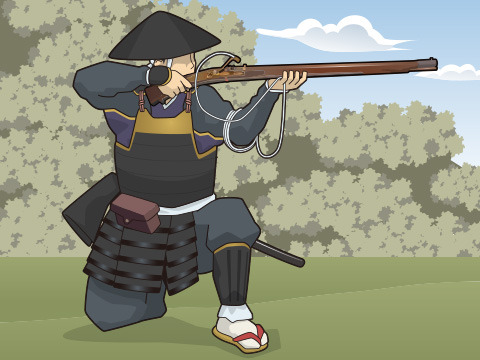

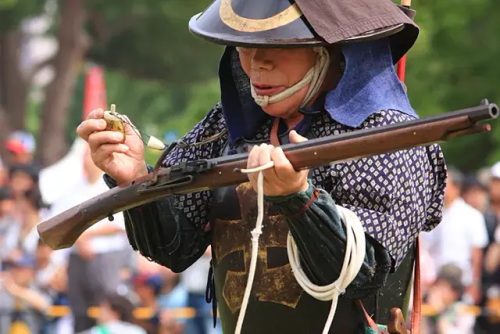
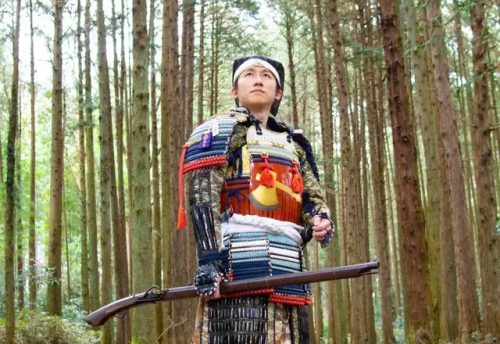
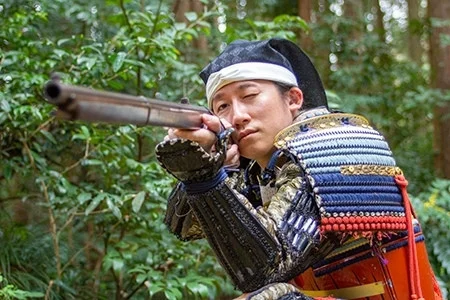

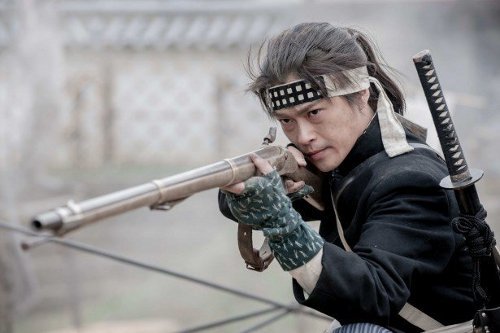
More Posts from Noticiasarquelogicasjaponesas and Others


Sean bienvenidos, a una nueva aclaración, arqueológica-histórica, en esta ocasión aclararemos y desmentir errores aplicados a la arqueología .¿Por qué la cerámica más antigua se encuentra en Asia y no en el mediterráneo?. - En cierto modo, muchas de las cosas más antiguas se encuentran en mesopotamia, pero no todo ya que muchas cosas surgieron en china y japón. En este caso, hablaremos de la cerámica, los vestigios más antiguos los podemos encontrar en el archipiélago nipón de hace 16.500 años de antigüedad durante el periodo Jōmon(Neolítico japonés lo que equivaldría al neolítico Europeo), eso era lo que se sabía hasta ahora, pero restos arqueológicos rescatados en una cueva de china, datan de una friolera de 20.000años, se tenía entendido que la cerámica apareció hace 10.000 años aproximadamente, ¿Por que se nos ocultan estos datos?, pues muy sencillo, porque no concuerdan con la recta cronológica estipulada, además de no generar interés para su estudio. - La foto número 1, son los restos de la cerámica china. - La foto número 2 es la cerámica de la cultura Jōmon. - Cualquier aportación siempre es bienvenida, ya que esta publicación sirve como aclarar ideas y para debatir. os deseo un buen día y un fuerte abrazo. - 新しい考古学と歴史の解明へようこそ。今回は、考古学に適用された誤りを明らかにし、否定します。なぜ最も古いセラミックが地中海ではなくアジアで見つかったのでしょうか。 - ある意味で、最も古いものの多くはメソポタミアで発見されていますが、中国と日本で発生したものほど多くはありません。今回は陶磁器についてお話しますが、16、500年前の縄文時代(ヨーロッパの新石器時代に相当する日本の新石器時代)の日本列島で最も古い遺跡がありますが、これは今まで知られていましたが、中国の洞窟で救出された考古学的遺跡は、なんと2万年前のもので、約1万年前に陶磁器が登場したと理解されていましたが、なぜこれらのデータが私たちから隠されているのでしょうか。直線と一致しないため、非常に単純です。その研究への関心を生み出さないことに加えて、年代順に規定された。 - 写真1は中国の陶器の残骸です。 写真2は縄文文化の陶器です。 この投稿は説明と議論として役立つので、どんな入力でもいつでも歓迎します。良い一日と大きな抱擁をお祈りします。 - Welcome to a new archaeological-historical clarification, this time we will clarify and deny errors applied to archeology. Why is the oldest ceramic found in Asia and not in the Mediterranean ?. - In a way, many of the oldest things are found in Mesopotamia, but not all as many things arose in China and Japan. In this case, we will talk about ceramics, the oldest remains can be found in the Japanese archipelago 16,500 years ago during the Jomon period (Japanese Neolithic, which would be equivalent to the European Neolithic), that was what was known until now, but archaeological remains rescued in a cave in China, dating from a whopping 20,000 years, it was understood that the ceramics appeared approximately 10,000 years ago, why are these data hidden from us ?, Well very simple, because they do not agree with the straight line stipulated chronological, in addition to not generating interest for its study. - Photo number 1 is the remains of Chinese pottery. Photo number 2 is the pottery of the Jomon culture. Any input is always welcome, as this post serves as clarification and discussion. I wish you a good day and a big hug.









Capítulo 1: INTRODUCCIÓN El japón pre-Jomon. Sean bienvenidos, japonistasarqueologos, a una nueva entrega, arqueológica, una vez dicho esto pónganse cómodos que empezamos. - En esta ocasión nos trasladamos al yacimiento arqueológico Iwajuku, es un sitio arqueológico que está ubicado en lo que ahora corresponde al barrio de Kasuke en la ciudad de Midori, prefectura de Gunma en la región de Kantō, este lugar recibió protección como Sitio Histórico Nacional en 1979 por parte de la unesco y data del paleolítico superior 35.000 -25000 a.C mucho más antiguo que el periodo Jomon estudios recientes lo fechan hace 40.000 años. Las fotos que os mostraré a continuación son del museo de la universidad Meiji, aparte de industria lítica hecha con obsidiana también hay guijarros de piedra. - Espero que os haya gustado y nos vemos en próximas publicaciones que pasen una buena semana. Capítulo 1: INTRODUCCIÓN El japón pre-Jomon. Sean bienvenidos, japonistasarqueologos, a una nueva entrega, arqueológica, una vez dicho esto pónganse cómodos que empezamos. - En esta ocasión nos trasladamos al yacimiento arqueológico Iwajuku, es un sitio arqueológico que está ubicado en lo que ahora corresponde al barrio de Kasuke en la ciudad de Midori, prefectura de Gunma en la región de Kantō, este lugar recibió protección como Sitio Histórico Nacional en 1979 por parte de la unesco y data del paleolítico superior 35.000 -25000 a.C mucho más antiguo que el periodo Jomon estudios recientes lo fechan hace 40.000 años. Las fotos que os mostraré a continuación son del museo de la universidad Meiji, aparte de industria lítica hecha con obsidiana también hay guijarros de piedra. - Espero que os haya gustado y nos vemos en próximas publicaciones que pasen una buena semana. - 第 1 章: はじめに 縄文以前の日本。 日本の考古学者の皆さん、新しい考古学へようこそ。そうは言っても、気を楽にして始めましょう。 - この度、岩宿遺跡へ移動しました。 岩宿遺跡は、現在の関東地方の群馬県みどり市嘉助地区に相当する遺跡で、平成29年に国の史跡として保護されています。 1979年にユネスコによって認定され、その起源は紀元前3万5千年から紀元前2万5千年の後期旧石器時代にまで遡り、縄文時代よりはるかに古く、最近の研究では4万年前のものであると推定されています。以下に紹介する写真は明治大学博物館所蔵のものですが、黒曜石を使った石工業のほかに石の小石もあります。 - 気に入っていただければ幸いです。今後の投稿でお会いしましょう。良い一週間をお過ごしください。 - Chapter 1: INTRODUCTION Pre-Jomon Japan. Welcome, Japanese archaeologists, to a new archaeological installment. Having said that, make yourself comfortable and let's begin. - On this occasion we moved to the Iwajuku archaeological site, it is an archaeological site that is located in what now corresponds to the Kasuke neighborhood in the city of Midori, Gunma prefecture in the Kantō region, this place received protection as a National Historic Site in 1979 by UNESCO and dates back to the Upper Paleolithic 35,000 / 25,000 BC, much older than the Jomon period, recent studies date it to 40,000 years ago. The photos that I will show you below are from the Meiji University Museum, apart from lithic industry made with obsidian there are also stone pebbles. - I hope you liked it and see you in future posts, have a good week.






Sean bienvenidos, japonistasarqueológicos a una nueva entrega, en esta ocasión hablaré sobre Obon el festival de los difuntos una vez dicho esto pónganse cómodos que empezamos. - En Japón, en los días de agosto, del 13 al 16, se celebra el Obon, que lo podemos ver en multitud de animes, películas y doramas ya hice mención sobre que estas cosas no solo hay que verlas, como meros dibujos, ya que tienen mucho sentido cultural e histórico. Esta festividad tiene muchos elementos muy característicos como el Gozan no Okuribi también llamado Daimonji, muy característico de finales de estas fiestas, porque suelen ser una serie de dibujos alguno de un torii y otros como el kanji de fuego, por mencionar algunos ejemplos. - Los pepinos(se utiliza para cuando el difunto llega) y berenjenas(caso contrario cuando el difunto se va ) simbolizan la llegada y el regreso del difunto al más allá. Hay muchos países que celebran esta festividad de formas distintas, pero todos tienen en común que honran a sus antepasados, es una festividad que tiene 400 a 500 años de antigüedad y es de origen budista. Para finalizar la publicación mencionaremos el Awa-Odori, (Odori significa bailar) y data del siglo XVI. - Espero que os guste y nos vemos en próximas publicaciones, que pasen una buena semana.
日本の考古学者の皆さん、新しい回へようこそ。今回はお盆についてお話ししましょう。 - 日本では、8月の13日から16日にかけて、お盆の行事が行われる。 アニメや映画、ドラマなどでもよく見かけるが、これらは単なる絵空事ではなく、多くの文化的、歴史的な意味を持っていることはすでに述べた。例えば、五山の送り火は「大文字」とも呼ばれ、鳥居の絵や「火」という漢字の絵など、お盆の風物詩となっている。 - キュウリ(故人が来るときに使う)とナス(故人が帰るときに使う)は、故人があの世に到着し、戻ってくることを象徴している。この祭りをさまざまな方法で祝う国はたくさんあるが、先祖を敬うという点では共通している。阿波踊りは16世紀に遡る。 - それでは、良い一週間を。
Welcome, Japanese archaeologists to a new installment, this time I will talk about Obon, the festival of the dead, and with that said, make yourselves comfortable and let's get started. - In Japan, in the days of August, from the 13th to the 16th, Obon is celebrated, which we can see in many anime, movies and doramas. I have already mentioned that these things should not only be seen as mere drawings, as they have a lot of cultural and historical meaning. This festivity has many very characteristic elements such as the Gozan no Okuribi also called Daimonji, very characteristic of the end of these festivities, because they are usually a series of drawings of a torii and others such as the kanji of fire, to mention some examples. - Cucumbers (used for when the deceased arrives) and aubergines (otherwise when the deceased leaves) symbolise the arrival and return of the deceased to the afterlife. There are many countries that celebrate this festival in different ways, but they all have in common that they honour their ancestors, it is a festival that is 400 to 500 years old and is of Buddhist origin. To end the publication we will mention the Awa-Odori, (Odori means dancing) and dates back to the 16th century. - I hope you like it and see you in future publications, have a nice week.


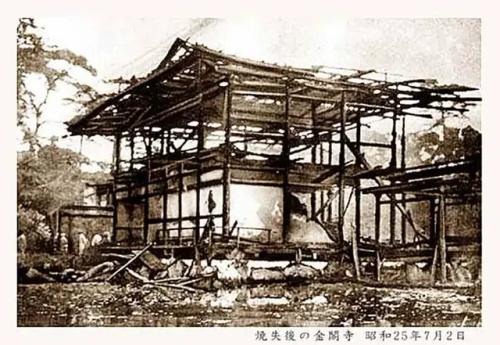
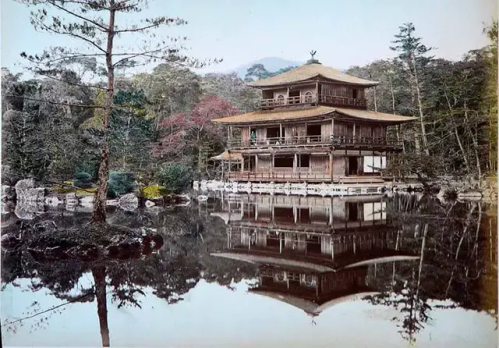



Sean bienvenidos, japonistasarqueologos, a una nueva entrega, cultural-artística vamos a hablar sobre Kinkaku-ji una vez dicho esto pónganse cómodos que empezamos. - El kinkaku-ji se localiza en la ciudad de Kyoto, en la prefectura de kansai. Kyoto fue una de las dos grandes capitales del Japón feudal porque su otra ciudad de gran peso fue Nara, pero eso es otra historia. - El Kinkaku-ji, fue construido en el siglo XIV, el que se ve actualmente es una reconstrucción porque el original se destruyó en un incendio en 1950 y el actual data de 1980 aproximadamente ya en 1880 perdió su revestimiento de pan de oro, fue La residencia de Ashikaga yoshimitsu tras su muerte lo donó a la orden religiosa y pasó a ser un templo budista. - Espero que os guste y nos vemos en próximas publicaciones. Fuentes de foto: https://blogukiyoe.es/kinkaku-ji-en-el-ukiyo-e wikipedia - Welcome, Japanese archaeologists, to a new cultural-artistic installment, we are going to talk about Kinkaku-ji. Once that has been said, make yourself comfortable and we will begin. - Kinkaku-ji is located in the city of Kyoto, kansai prefecture. Kyoto was one of the two great capitals of feudal Japan because its other major city was Nara, but that is another story. - The Kinkaku-ji was built in the 14th century, the one currently seen is a reconstruction because the original was destroyed in a fire in 1950 and the current one dates from approximately 1980 and in 1880 it lost its gold leaf coating, it was La residence of Ashikaga Yoshimitsu after his death he donated it to the religious order and it became a Buddhist temple. - I hope you like it and see you in future posts. Photo sources: https://blogukiyoe.es/kinkaku-ji-en-el-ukiyo-e Wikipedia - 日本の考古学者の皆さん、新しい文化芸術の回へようこそ。金閣寺についてお話します。それが終わったら、落ち着いてから始めましょう。 - 金閣寺は関西県京都市にあります。京都は、もう一つの主要都市が奈良であったため、封建時代の日本の二大首都の一つでしたが、それはまた別の話です。 - 金閣寺は 14 世紀に建てられ、現在見られるものは再建されたものです。オリジナルは 1950 年の火災で焼失し、現在のものは 1980 年頃のもので、1880 年に金箔のコーティングが失われ、ラ邸でした。足利義満の死後、教団に寄進され仏教寺院となった。 - 気に入っていただければ幸いです。今後の投稿でお会いしましょう。 写真出典: https://blogukiyoe.es/kinkaku-ji-en-el-ukiyo-e ウィキペディア
El origen de un país y su prehistoria, un paseo por la historia del país del sol naciente. /国の成り立ちと先史、日出ずる国の歴史を歩く。/The origin of a country and its prehistory, a walk through the history of the country of the rising sun.
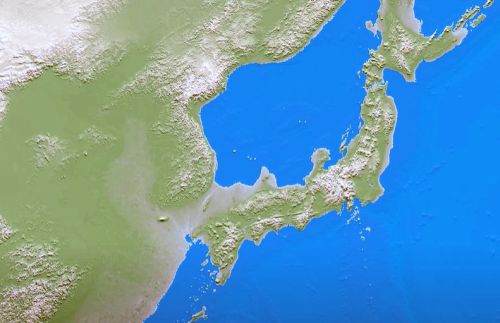



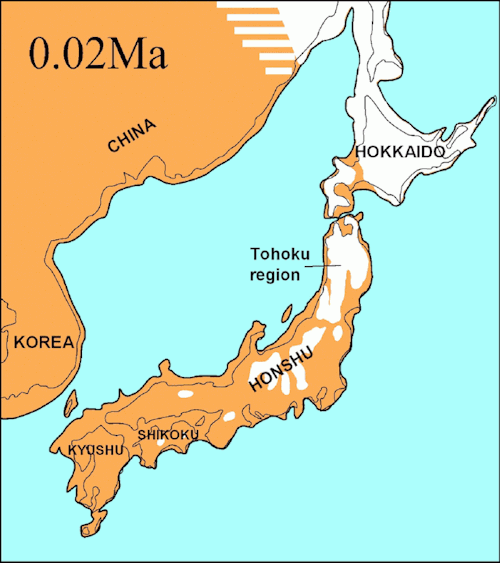

Sean bienvenidos, japonistasarqueológicos, a una nueva entrega de arqueología nipona e historia nipona, una vez dicho esto pónganse cómodos qué empezamos.
-
En los capítulos 1,2,3:Hablamos de: ¿Cuándo llegaron por primera vez los homínidos a Japón? ¿De qué vivían? Hablamos un poco de su geografía, de las cuatro eras glaciales, también se mencionó el holoceno. Empezamos a hablar del pleistoceno, y de cuando empezó la prehistoria de hace 2,5 (esta fecha está desfasada actualmente ronda 4 millones, por los hallazgos de industria lítica) a 7 millones de años. Comentamos algunos homínidos: Homo neanderthalensis, Homo heidelbergensis, homo ergaster entre otros homínidos, comentamos como África es la cuna de la humanidad, y su diversidad de dispersiones migratorias. También se comentó la llegada los homínidos a Okinawa hace 30.000-40.000 años y los Ainus como posibles primeros pobladores. Seguimos hablando del pleistoceno, estuvimos explicando un poco sobre el pleistoceno, se mencionó un poco la formación del archipiélago, mencioné mi posible teoría y al final terminamos con ¿Cómo se llaman las placas tectónicas que forman el archipiélago?
-
Espero que os guste y nos vemos en próximas publicaciones, que pasen una buena semana.
-
日本の考古学者諸君、ようこそ、日本考古学と日本史の新連載へ!さあ、くつろいで、始めよう。
第1章、第2章、第3章では、「ヒト科の動物はいつ日本にやってきたのか?地理、4つの氷河期、完新世についても少し触れました。更新世について話し始め、先史時代が始まった250万年前(この年代は、石器産業の発見により、現在では約400万年古くなっている)から700万年前について話した。ホモ・ネアンデルターレンシス、ホモ・ハイデルベルゲンシス、ホモ・エルガスターなどのホミノイドについて解説し、アフリカが人類発祥の地であること、その移動分散の多様性について述べた。また、3万~4万年前の沖縄へのヒト科動物の到着と、最初の入植者である可能性のあるアイヌ人についても議論した。私たちは更新世について話を続け、列島の形成について少し説明し、私が可能性のある説を述べ、最後にこう締めくくった。 列島を形成しているプレートの名前は?
それではまた、良い一週間を。
-
Welcome, Japanese archaeologists, to a new instalment of Japanese archaeology and Japanese history, so make yourselves comfortable and let's get started.
In chapters 1,2,3:We talk about: When did hominids first arrive in Japan? What did they live on? We talked a little bit about their geography, the four ice ages, the Holocene was also mentioned. We started talking about the Pleistocene, and when prehistory began from 2.5 (this date is now out of date by about 4 million years ago, due to the findings of lithic industry) to 7 million years ago. We commented on some hominids: Homo neanderthalensis, Homo heidelbergensis, homo ergaster among other hominids, we commented on how Africa is the cradle of humanity, and its diversity of migratory dispersions. We also discussed the arrival of hominids in Okinawa 30,000-40,000 years ago and the Ainus as possible first settlers. We continued talking about the Pleistocene, we were explaining a bit about the Pleistocene, the formation of the archipelago was mentioned a bit, I mentioned my possible theory and at the end we finished with What are the names of the tectonic plates that form the archipelago?
I hope you like it and see you in future posts, have a nice week.
https://www.instagram.com/noticiasarquelogicasjaponesas?igsh=cHptNTJxdWZoNm83

Sean bienvenidos a una nueva publicación en la cual os voy a compartir mi cuenta de Instagram, en la cual comparto todo lo que hago aquí en Tumblr a modo de reel, también comparto en el mismo formato lo que hago de mi otro blog. Hago muchos directos, de Japón ya sea de historia, arqueología, cultura entre otros puntos espero que os guste y nos vemos en próximas publicaciones hasta la próxima.
-
新しい投稿へようこそ。ここでは私の Instagram アカウントを共有します。ここでは、私がここで行っているすべてのことをリールとして Tumblr で共有します。また、他のブログで行っていることも同じ形式で共有します。私は歴史、考古学、文化など、日本からたくさんのライブショーを行っています。気に入っていただければ幸いです。また次回までお会いしましょう。
-
Welcome to a new post in which I'm going to share my Instagram account, in which I share everything I do here on Tumblr as a reel, I also share in the same format what I do on my other blog. I do a lot of live broadcasts, from Japan, whether it's history, archaeology, culture, among other topics. I hope you like it and I'll see you in future posts until next time.





ようこそ、日本の考古学者、日本の考古学の新しい章へ。今度は別の古墳を紹介します。そうは言っても、快適に始めましょう。 - この古墳はハリズカと呼ばれ、松本市里山辺にあり、田んぼや果樹園に囲まれています。 - 5世紀半ばにさかのぼり、直径は幅20 m、高さ2mです。 誰が埋葬されたのですか?私はあなたに任せます。 - 良い一日と良い週をお祈りします。考古学と日本の歴史の今後の出版物でお会いしましょう。 - Welcome, Japanese archaeologists, to a new chapter of Japanese archaeology, this time I present to you another burial mound, having said that, make yourself comfortable, let's begin. - This burial mound is called Harizuka, and it is located in Satoyamabe in the city of Matsumoto, it is surrounded by rice paddies and orchards. - It dates from the middle of the 5th century and its diameter is 20 m wide and 2 m high. Who was buried? I leave it to you. - I wish you a good day and a good week, see you in future publications of archeology and Japanese history.
-
Bienvenidos arqueólogos japoneses a un nuevo capítulo de la arqueología japonesa, en esta ocasión les presento otro túmulo, dicho esto, pónganse cómodos, comencemos.
-
Este túmulo se llama Harizuka, y está ubicado en Satoyamabe en la ciudad de Matsumoto, está rodeado de arrozales y huertos.
-
Data de mediados del siglo V y su diámetro es de 20 m de ancho y 2 m de alto. ¿Quién fue enterrado? ¿Te lo dejo?
-
Les deseo un buen día y una buena semana, nos vemos en futuras publicaciones de arqueología e historia japonesa.





Sean bienvenidos japonistasarqueologicos a una nueva noticia arqueológica un poco particular, científicos realizan un estudio a una sirena momificada sagrada de 300 años de antigüedad, dicho esto pónganse cómodos que empezamos. - Una sirena momificada fue usada durante 300 años como amuleto sagrado por los lugareños que creían que tenía poderes curativos, recientes estudios los especialistas descubrieron que el objeto no era tan misterioso como parecía porque solo era artificial. - La gente pensaban que si comían de su carne obtendrían la inmortalidad, estuvo expuesta durante cuatro décadas en el templo Enjuin de Asakuchi, en la prefectura de Okayama. - La criatura tiene 30 cm, fue supuestamente capturada en el océano Pacífico, frente a la isla japonesa de Shikoku, entre los años 1736 y 1741. - ¿Qué opinan al respecto? ¿Conocían la noticia? Espero que os guste y nos movamos en próximas publicaciones del país del sol naciente.
-
Welcome Japanese archaeologists to a new archaeological news, scientists are conducting a study of a 300 year old sacred mummified mermaid, so make yourselves comfortable and let's get started. - A mummified mermaid was used for 300 years as a sacred amulet by locals who believed it had healing powers, recent studies have found that the object was not as mysterious as it seemed because it was only artificial. - People believed that if they ate its flesh they would gain immortality, it was on display for four decades at Enjuin Temple in Asakuchi, Okayama Prefecture. - The creature is 30 cm long, and was supposedly captured in the Pacific Ocean off Japan's Shikoku Island between 1736 and 1741. - What do you think about it, did you know about it? I hope you like it and I look forward to future posts from the land of the rising sun.
-
ようこそ日本の考古学者たちへ 新しい考古学ニュースです 科学者たちは300年前の神聖なミイラ化した人魚の研究を行っています どうぞお寛ぎください さあ始めましょう。 - 人魚のミイラは、300年もの間、地元の人々に神聖なお守りとして使われ、治癒力があると信じられていました。最近の研究で、この物体は人工物であるため、見た目ほど神秘的ではないことが判明しました。 - 人魚の肉を食べると不老不死になると信じられ、岡山県浅口市の延寿院で40年間展示されていた。 - この生物は体長30cmで、1736年から1741年にかけて日本の四国沖の太平洋で捕獲されたと言われている。 - どうでしょう、ご存知でしたか?私はあなたがそれを好きであることを願って、私は日出ずる国からの将来の出版物を楽しみにしています。

Una espada con alma propia./自らの魂を宿した剣。/A sword with its own soul. La katana o (sable japonés) japonesa es un elemento, único en el mundo, porque para los samuráis la espada era su alma y perderla era todo un deshonor. La katana japonesa surge el siglo VIII, periodo Heian, pero en el periodo entre el 1192 y el 1336, durante el periodo Kamakura, la producción de espadas se amplió bastante. - 日本刀は世界でも類を見ない要素です。サムライにとって刀は魂であり、それを失うことは完全な不名誉だからです。 日本刀は平安時代の8世紀に誕生しましたが、鎌倉時代の1192年から1336年にかけて刀剣の生産は大幅に拡大しました。 - The Japanese katana or (Japanese sword) is an element, unique in the world, because for the samurai the sword was their soul and losing it was a complete dishonor. The Japanese katana emerged in the 8th century, Heian period, but in the period between 1192 and 1336, during the Kamakura period, the production of swords expanded considerably.



Sean bienvenidos japoniatasarqueológicos a una nueva entrega, en esta ocasión os traigo otra noticia de arqueología de Japón la cual nos trasladaremos al periodo kofun o protohistórico (250 /592d.c) dicho esto Comencemos. - El túmulo funerario se encuentra rodeado de una doble fila de piedras, dicho túmulo se llama Koyasu y se localiza en Nakagawara Isenara, data de hace 1300 a 1400 años y pertenece al kofun tardío o protohistórico. Dicho conjunto arqueológico dispone de unos, 3600 kilómetros cuadrados aproximadamente, en la parte excavada dispone de 12 m y 14,8 de anchura se ha localizado debido a la construcción de la autopista Shin Tomei, que se localiza al margen derecho de Suzukawa al pie de la montaña Oyama se han encontrado tres dientes humanos. - Las piedras de dicho túmulo tienen distinta cantidad y tamaño, probablemente el túmulo central pertenecería a un jefe de un clan tribal y algún y el otro túmulo de menor tamaño pertenecería, pues, a alguien de la misma clase social, es decir que tuviera casi el mismo nivel social o un poco inferior al de la persona principal. - ¿De qué personaje histórico se trata? En próximas publicaciones hablaremos de este tema y aclararemos dudas sobre ellos dicho esto espero que les haya gustado y nos vamos en próximas publicaciones historia, arqueología de Japón hasta la próxima. - Welcome from Japan to a new installment, this time I bring you another archeology news from Japan which we will move to the kofun or protohistoric period (250 / 592 AD) with that said Let's start. - The burial mound is surrounded by a double row of stones, said mound is called Koyasu and is located in Nakagawara Isenara, dates from 1300 to 1400 years ago and belongs to the late or protohistoric kofun. This archaeological complex has approximately 3,600 square kilometers, in the excavated part it has 12 m and 14.8 in width, it has been located due to the construction of the Shin Tomei highway, which is located on the right bank of Suzukawa at the foot of the Oyama Mountain, three human teeth have been found. - the stones of said tumulus have different quantity and size, probably the central tumulus would belong to a chief of a tribal clan and some and the other smaller tumulus would belong, well, to someone of the same social class, that is to say, who had almost the same social level or a little lower than the main person. - What historical character is it? In future publications we will talk about this topic and clarify doubts about them, having said that, I hope you liked it and we will go in future publications history, archeology of Japan until next time.
-
 hidingsamurai reblogged this · 1 month ago
hidingsamurai reblogged this · 1 month ago -
 chuuryoku liked this · 4 months ago
chuuryoku liked this · 4 months ago -
 repera23 liked this · 11 months ago
repera23 liked this · 11 months ago -
 artani liked this · 11 months ago
artani liked this · 11 months ago -
 arazhasret liked this · 11 months ago
arazhasret liked this · 11 months ago -
 bear-pattern-hamster liked this · 11 months ago
bear-pattern-hamster liked this · 11 months ago -
 noticiasarquelogicasjaponesas reblogged this · 11 months ago
noticiasarquelogicasjaponesas reblogged this · 11 months ago -
 japanicus-nerdus liked this · 1 year ago
japanicus-nerdus liked this · 1 year ago -
 naser1963 liked this · 1 year ago
naser1963 liked this · 1 year ago -
 asongpanda1 liked this · 1 year ago
asongpanda1 liked this · 1 year ago -
 narihira8 liked this · 1 year ago
narihira8 liked this · 1 year ago -
 thelostdreamsthings liked this · 1 year ago
thelostdreamsthings liked this · 1 year ago -
 curiokhan0113 liked this · 1 year ago
curiokhan0113 liked this · 1 year ago -
 catdoll007 liked this · 1 year ago
catdoll007 liked this · 1 year ago -
 iso-photo liked this · 1 year ago
iso-photo liked this · 1 year ago -
 hidewaku liked this · 1 year ago
hidewaku liked this · 1 year ago -
 fplkk2022 liked this · 1 year ago
fplkk2022 liked this · 1 year ago -
 rodolfo9999 liked this · 1 year ago
rodolfo9999 liked this · 1 year ago -
 u-nobu liked this · 1 year ago
u-nobu liked this · 1 year ago -
 margocooper liked this · 1 year ago
margocooper liked this · 1 year ago -
 kamukamu1965 liked this · 1 year ago
kamukamu1965 liked this · 1 year ago -
 hiromusicarts-blog liked this · 1 year ago
hiromusicarts-blog liked this · 1 year ago -
 sicks93 liked this · 1 year ago
sicks93 liked this · 1 year ago -
 noticiasarquelogicasjaponesas reblogged this · 1 year ago
noticiasarquelogicasjaponesas reblogged this · 1 year ago

238 posts